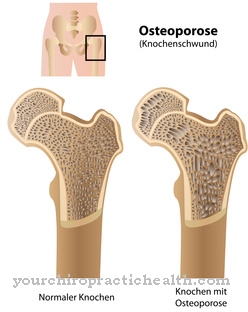In Germany the Neurosurgery assigned to a sub-area of medicine that treats diseases of the central or peripheral nervous system through surgery. Contrary to the technical name, this medical discipline is not assigned to surgery or neurology.
What is Neurosurgery?

Neurosurgery is an independent medical discipline and, by definition, comprises the detection and operative treatment of injuries, malformations and diseases of the central nervous system and its sheaths as well as the vegetative and peripheral nervous system.
This also includes the necessary preliminary examinations, conservative treatment methods and the rehabilitation that follows the procedure. A neurosurgeon undergoes six years of specialist training in Germany. Those entitled to further training work 48 months in inpatient care and six months in intensive care for neurosurgical patients.
Up to twelve months of work in surgery, neuropathology, neurology or neuroradiology or 6 months in anatomy, anesthesiology, ear, nose and throat medicine, ophthalmology, pediatric and adolescent medicine or oral and maxillofacial surgery can be counted towards the specialist training.
Function, effect & goals
Interventions on the brain include the surgical removal of tumors in supra- and infratentorial (skin as the separation of the cerebellum and cerebrum), intracerebral (inner brain tissue) processes, including area-specific tumor therapy, as well as the treatment of infarcts and bleeding.
Surgical interventions enable the elimination of traumatic brain injuries and deformities of the brain, spinal cord and skull in the form of intra- and extradural hematomas, liquor fistulas, impression fractures and nerves. The neurosurgeons perform operations on cleft deformities or establish liquor drains. They treat diseases of the blood vessels, the intervertebral discs and the cervical (cervical vertebrae), thoracic (thoracic vertebrae) and lumbar (lumbar vertebrae) spine. Nerve root and spinal cord decompression are particularly suitable for this.
Functional disorders such as epilepsy and pain syndromes can be eliminated through destructive implantation procedures. Myelography and ventricular and lumbar CSF drainage with no pressure measurement and biopsies are used for diagnostic interventions. Neurosurgeons treat hydrocephalus (problems with the drainage of cerebrospinal fluid) through endoscopic procedures, the placement of temporary drains, or permanent drains. In special clinics, patients with central movement disorders are treated using special navigation-based simulation methods. A similarly oriented navigation technology enables doctors to treat tumors by placing radiating elements, which is aimed at targeted brain tumor therapy.
The neurologists ensure that samples are taken and treated appropriately for laboratory tests and classify them into the respective clinical picture. Neurosurgery is also used in the area of many spinal diseases. Tumors, herniated discs and spinal canal genes are treated surgically and removed. In the process, foci of other tumors growing in the body such as bone tumors, connective tissue tumors, tumors of the meninges and neural tissue tumors are removed. In the case of herniated discs and spinal canal narrowing, the constricting and pain-causing tissue is removed. In peripheral neurosurgery, doctors deal with the treatment of bottleneck syndromes such as ulnar channel syndrome (nerve constriction in the elbow), tarsal tunnel syndrome (nerve constriction in the foot), supinator tunnel syndrome (paralysis of the long fingers and thumb) and the carpal tunnel syndrome (nerve congestion in the hand).
Further tasks are preparatory measures for organ donations, the treatment of tumors on the nerves and the restoration of nerve continuity through acute care immediately after transplant operations and injuries. Neurologists need to be familiar with the use of infusion, transfusion and blood replacement therapy, as well as enteral and parenteral nutrition for their patients. They know how to use catheter and puncture techniques correctly and evaluate the examination material obtained from them. Simple ventilation techniques and ventilation weaning after surgery are routine in the clinic. The doctors care for palliative patients and make the last phase of their lives easier with medical therapies.
Neurosurgeons not only need to be able to identify the physical causes of their patients' illnesses, they also need to deal with their psychological condition. This includes the detection of psychogenic syndromes, somatopsychic reactions (physical symptoms without an identifiable medical cause) and psychosocial connections. They accompany their patients with occupational, physical and speech therapy measures. Through the intensive medical basic care as well as the detection of acute emergencies and the implementation of life-saving measures on the patient, they guarantee the maintenance of his vital functions and resuscitation.
The tracheotomy (surgical access to the windpipe) ensures ventilation of the patient. General activities include wound care, sterile draping, diagnostic preparation and pre- and post-operative care for patients with frequently occurring neurosurgical complaints. During their specialist training, neurologists also learn apparently simple activities such as how to deal appropriately with patients and colleagues, introducing patients to rounds, neurosurgical demonstrations and documentation and behaviors in the operating room.
You can find your medication here
➔ Medicines for paresthesia and circulatory disordersRisks, side effects & dangers
The risks of neurosurgery are nowadays minimal thanks to modern technology, although a certain risk cannot be completely ruled out with every surgical intervention in the human organism. Neurosurgery regularly strives for minimally invasive procedures using endoscopic and stereotactic methods.
The basics of micron neurosurgery are given through the use of innovative diagnostic imaging technology such as computer tomography and magnetic resonance tomography. The functions of the human body can already be determined preoperatively by positron emission tomography (PET, nuclear medicine method for visualizing metabolic processes in the body for the early detection of tumor diseases), magnetoencephalography (MEG, brain measurement) and functional magnetic resonance tomography (MRT, representation of tissues and Organs by magnetic fields and radio waves). Powerful computers help doctors to include the information they have gained with regard to the mental and physical functions of the patient in their operation planning.
Functional computer-assisted microsurgery is one of the standard procedures in all well-equipped clinics today. This clinical routine is supplemented by modern methods such as optical coherence tomography (detection of retinal and vascular diseases) and multiphoton fluorescence tomography (non-invasive, novel diagnostic system without markers and radiological exposure). Further techniques of intraoperative imaging are ultrasound and laser fluorescence marking of tumors, sonographic (ultrasound) and Doppler / duplex examinations of extracranial brain-supplying and intracranial vessels.
The doctors carry out neurophysiological examinations using the electroencephalogram (non-invasive method for measuring electrical brain waves) including evoked potentials (specifically triggered electrical phenomena). The electromyogram (measurement of the natural electrical muscle tension, "derivation") and myelography (X-ray image by injecting contrast medium into the spinal canal) are further imaging methods. These innovative methods enable the microscopic definition of tumors in the patient's body and a gentle, minimally invasive, yet maximally effective neurosurgery while at the same time protecting important nerve and brain functions.
Typical & common nerve diseases
- Nerve pain
- Nerve inflammation
- Polyneuropathy
- epilepsy













.jpg)

.jpg)
.jpg)











.jpg)